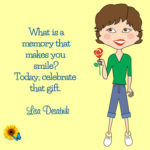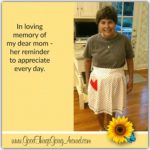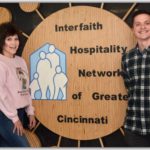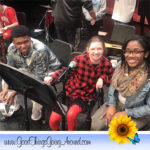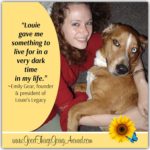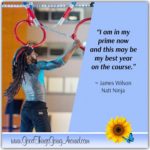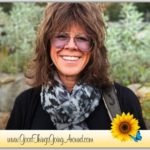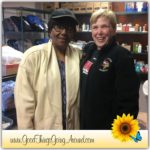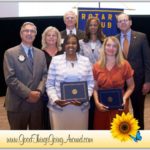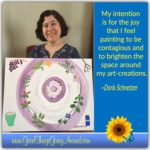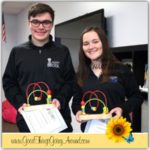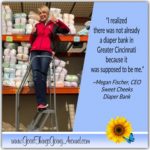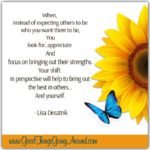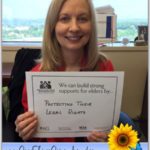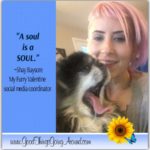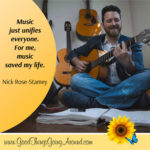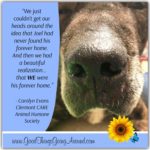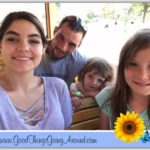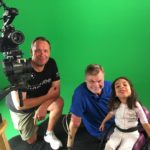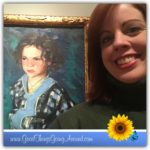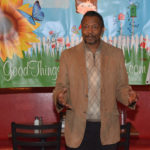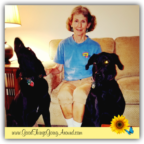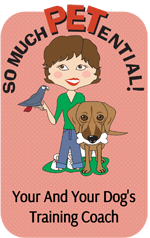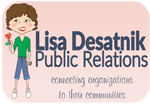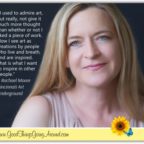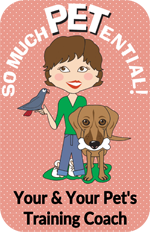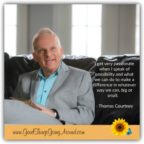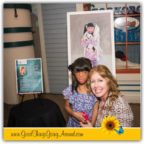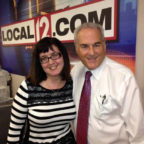This Dog Rescue Run Is Her Passion
I met Lori Gerring several years back through her work on the Paw Joggers Rescue Run. Billie Mendoza, founder and owner of Paw Joggers, whom I have known for many years had expanded her capacity to help pets by forming a nonprofit organization to organize an annual race that would benefit local rescues. And Lori has been Billie’s ‘right hand woman’ since.
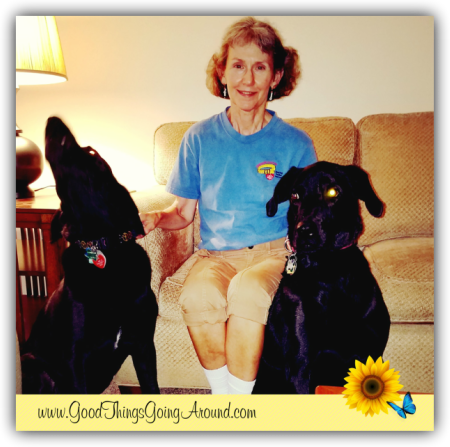 The Paw Joggers Rescue Run is this coming Sunday, October 15th, from 8:30am-12:00pm with the race beginning at 10:00am. At Sharon Woods Park (11450 Lebanon Rd; 45241) Competitive Runners, Recreational Runners, Walkers and Runners/Walkers with (well-behaved) dogs invited to participate!
The Paw Joggers Rescue Run is this coming Sunday, October 15th, from 8:30am-12:00pm with the race beginning at 10:00am. At Sharon Woods Park (11450 Lebanon Rd; 45241) Competitive Runners, Recreational Runners, Walkers and Runners/Walkers with (well-behaved) dogs invited to participate!
The Race includes a choice of challenging 5k (chip timed event) and a relatively flat 2k course. Proceeds will go to dozens of Cincinnati area dog and cat rescue organizations.
Paw Joggers Rescue Run now includes a Saturday Expo from Noon to 4 pm with a variety of vendors. It will be held at the MARCH FIRST BREWING (7885 Kemper Rd; 45249).
The Paw Joggers Animal Community Fund (Paw Joggers ACF) is a nonprofit organization dedicated to supporting the local animal welfare community through events, awareness, and monetary donations. The Paw Joggers ACF and its events are powered solely by Paw Joggers Run volunteers.
Lori shared this story of why this Race is her passion.
“Several years ago, my New Year’s resolution was to “do something outside of my comfort zone” each month. I haven’t always kept the resolution after that year, but helping with the PJRR was most definitely outside of my comfort zone: I hate asking for donations and cold-calling and I had no idea what goes into a 5K. The first year was, to put it mildly, a learning experience.
I am involved with the PJRR because I was there when Billie Mendoza decided to form a nonprofit and organize the 5K, based on the Rusty Ball model of beneficiary participation. A dedicated race participant; Billie took care of the race details. I was the “Communications Coordinator”, contacting vendors, sponsors, volunteers, and promoting the new 5K/2K, last year I added the EXPO to my duties.
The animal welfare community is important to me. My first dog, Rocket the Black Lab, was from a backyard breeder. I didn’t know any better. Several rescues wouldn’t let us adopt because we hadn’t raised a dog and didn’t have an established relationship with a veterinarian. We took Rocket to rescue group fundraisers because it was fun to be out with him, where we learned about the work these groups do. Several years later we adopted another Black Lab, Turbo, from a rescue. After Rocket passed, we adopted Flash (From Elvis Presley TCB in a Flash), also from a rescue.
My first rescue ‘job’ was with Kyle New Hope Animal Rescue. Dr. Kyle was such an incredible help with Rocket that it seemed like a good way to thank her. Other volunteer work has been as a Therapy Dog Team with Turbo (and Rocket) for the Alliance of Therapy Dogs; projects, including grant reviews, for the Grey Muzzle Organization; and minor help with the United Pet Fund.
But the PJRR has a special place in my life. I’m a huge believer in the importance of walking with your dog (for all sorts of reasons) and the PJRR promotes just that. It’s also a way to help a variety of rescues. I’ve met so many people dedicated to helping pets. I’ve learned that pets help people in return so it’s a worth-while cause. And selfishly it makes me a better person because I push myself to get things done.”

Rachael Moore Sees Art As Discovery
Rachael Moore will tell you, she is not an artist but she is a huge fan of the arts. She used to be what she calls ‘that typical visitor’ who would pop into museums during her trips to admire art, but really, not giving it much more thought than whether or not she liked a piece of work.
 Now, she told me, “I see art as creations by people who lived and breathed, and were inspired. Art just comes alive and is constantly evolving. I can see the story behind it. It is a journey of experimentation for artists who have studied with their minds or hands or philosophical movement.”
Now, she told me, “I see art as creations by people who lived and breathed, and were inspired. Art just comes alive and is constantly evolving. I can see the story behind it. It is a journey of experimentation for artists who have studied with their minds or hands or philosophical movement.”
Before her metamorphosis, Rachael was on track for a corporate career. She was three years into law school when she moved with her husband to London for several years, and then moved to Cincinnati in 2011 when her husband took a job with GE Aviation. Rachael got involved with the arts a year later with a volunteer position for the Constella Music Festival.
Her transition had begun. Rachael remembers a conversation with a group of local artists. “They needed a chance to show their work, but also I saw such a passion here for people who want to see what Cincinnati artists are doing.”
That is when her vision began to crystallize.
In 2014 Rachael organized several pop-up shows in Over-the-Rhine; and today, she runs an 800 square foot boutique contemporary gallery called Cincinnati Art Underground.  Each month it features the work of diverse artists known locally and nationally, with artist talks and events. Coming up in October, her gallery will feature David Gerena aka KAOS, a graffiti artist who got his start in New York City in the 1980s, when graffiti was considered an ‘underground culture’.
Each month it features the work of diverse artists known locally and nationally, with artist talks and events. Coming up in October, her gallery will feature David Gerena aka KAOS, a graffiti artist who got his start in New York City in the 1980s, when graffiti was considered an ‘underground culture’.
“I like surprising our visitors. I want Cincinnati Art Underground to be a gallery where there is always something more to discover,” Rachael said.

The Best Version Of Who We Are
The other day, Thomas Courtney and I met for coffee and he shared a story with me that I thought everyone could benefit from hearing, so I asked him to write about it as a guest post, which is below. Thomas has created and is in the process of bringing to the airwaves, It’s a Good Life – a television show that informs, inspires and provides insight on living a better life.
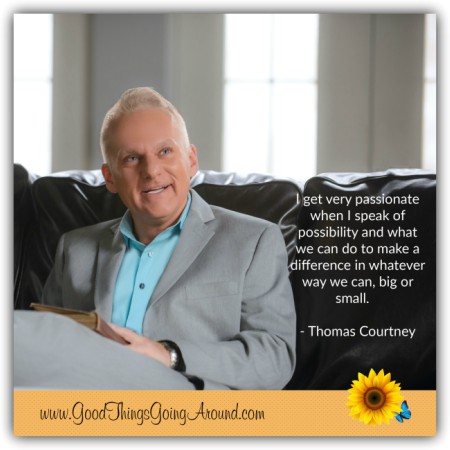 When we wake up in the morning we should say to ourselves, “Today, I am going to make this day, the best day, I have ever had in my life. “
When we wake up in the morning we should say to ourselves, “Today, I am going to make this day, the best day, I have ever had in my life. “
A couple of years ago I was speaking at an education and computer technology conference to a group of K12 through college software writers and developers about the power of making an impact in our communities and our world at large. I shared about children who are living in poverty and homelessness; and about how the number one way we can have the greatest impact on life around us is by being the best version of who we are, right now, in this moment. Not a version of anyone else.
In my conference speech, I told the story of how I would sit and talk with children in their classroom and listen to their stories of what they wanted to be when they grew up. Many of those students were kids who had some behavioral issues stemming from their challenges of living a life that was much more difficult than what the average person was living.
I get very passionate when I speak of possibility and what we can do to make a difference in whatever way we can, big or small. I am passionate because I believe in possibility. And when I spoke to those children who believed they had no hope and no place to turn and no one to turn to and no way out, their eyes lit up like Christmas trees when I told them there is always a way out and a way up.
I said to the children, “In life, moments will come along when you think. ‘I have no chance of getting over this hurdle’.” I told them, “You will think you believe that you do not have what it takes to be whatever it is that you want to be. I am here to tell you that simply is not true. You will be spending the rest of your life constructing your life. Self-construction never stops.
“There will be times when you think you are stuck. And you may likely be. And there will be times when you will be afraid of the unknown. And it is going to feel like you aren’t capable of taking that next step. And you will wonder if you are in charge, or is life in charge of you. Most likely, it will be a little of both. However, if you build a good value system, stick to it, and follow your heart this will give you a foundation to take leaps you may never think you can take. And most importantly, be who you are. Do not try to be anyone else. And be the very best version of who you are.”
When I finished my story, the audience was motionless. Eyes had blank stares and were frozen in time. You could hear a pin drop. Suddenly a hand went up. The woman had this to say, “I can appreciate how passionate you are and the work that you are doing with these children, but I am not in your line of work. I get up every day and do the same thing over and over again, sitting at my computer typing. I have very little to do with anyone else, little alone making a great impact. I think I do my job well, but I wouldn’t necessarily say I am making a difference.”
I briefly paused, thinking about what was said before giving an answer. “Well, let’s go back to what I said to the children about being the best version of you,” I told her, asking how she begins her days.
“I get up after hitting the snooze three times, chuckle, fix my coffee, race to the shower, and may or may not have time for breakfast, and run to my car trying to hurry to make sure I’m not late. Then I realize I am about out of gas and need to stop and fill up my gas tank on my way into the office.,” she told me as the audience laughed. “And it really depends on how late I was out the night before,” she added.
Then I asked her, “Tell me how you feel about your work?,” and she explained, “I love my job. I make a good living. I am doing what I went to school for. This is what I do.”
I paused again for a moment, and then asked, “Do you believe the picture you just painted for me is the best you can be? Do you believe you are being the best version of who you are based on what I explained to the children?”
She was quiet.
I went on, “I do not mean to sound like I have the answers for you and your life. But hear me out for a moment. What if you believed the work that you do, which is creating and building software for K12 through college level as having a serious and critical impact on not only the lives of the children and young adults you build this software for, but on the world? What if you believed the decisions that you make every day in your life impacted the decisions and thought processes of every individual that your work project touches every day and even on different time zones? Would that change how you see yourself and the work that you do every day?”
I could see her mental wheels turning. I could see she was now thinking about a bigger picture. Sometimes, what we all need is to get clarity on what is most important. Sometimes we all need to see that in its simplest form we play a much bigger role in this hamster wheel of life than we would like to think. Self-construction never stops.
We have 86,400 hours in a day to work until we retire, if we retire and depending on when you graduate from high school. But just for conversation sake these are the hours we have. This is time. We should ask ourselves, “Who do we want to be and are we being our very best? Is it the best version of who we are?”
Life is fleeting. Time is invaluable. And since we are so limited then I’d think we would want to spend it becoming the best of who we are, giving the best of which we are, not only for the world, but most importantly for ourselves. The world is our stage. We might as well choose to strive to live happy, develop and perfect our humanity, and celebrate being the best of who we are. Today, I am going to make this day the best day I have ever had in my life.
- Thomas Courtney
Reach Thomas by calling 513.616.0407 or emailing thomas@itsagoodlifeinc.com

Portraying Souls Through Art
Jing was 16 months old, just weeks ahead of playing make believe, running, jumping, and exploring. Only those developmental milestones she was on target for reaching, had to be delayed. The course of her life was about to make a detour that would alter her journey for a very long time.
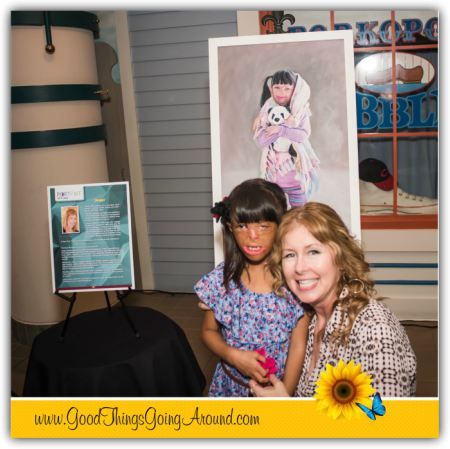 Jing was born to parents who lived in a rural village of southwest China where central electricity and modern plumbing were unavailable. Meals were cooked over an open fire, that one fateful day burned much of the newly mobile infant’s body. By the time Jing celebrated her second birthday, she had already undergone three surgeries.
Jing was born to parents who lived in a rural village of southwest China where central electricity and modern plumbing were unavailable. Meals were cooked over an open fire, that one fateful day burned much of the newly mobile infant’s body. By the time Jing celebrated her second birthday, she had already undergone three surgeries.
Her story traveled to the United States via the media and internet, and eventually led her to Cincinnati, one week past her second birthday in 2012, where she has been living with a host family and receiving treatment from Shriner’s Hospital for Children – Cincinnati.
Her injuries caused airway obstruction which made it difficult to stay asleep for longer than 90 minutes at a time. She had lost vision in one eye, and the Chinese hospital had fused the lid. Jing’s mouth was so contracted from scar tissue that she could only consume bottles of formula. Over the next year, Kevin Yakuboff M.D., FACS, FAAPS, surgically released Jing’s mouth and neck, which allowed her to enjoy solid food for the first time. (Meatballs were a favorite!) He corrected her eyelid for a more symmetric and balanced appearance. By her third birthday, Christopher Gordon M.D., FACS, FAAP surgically altered her jaw, a major advancement which opened her airways and allowed her to sleep through the night for the first time.
An ocean separating them, when it had become clear that it was in Jing’s best interest to stay in Cincinnati near to her medical team, her parents wanted that for their daughter, and Jing’s host family became her adopted family.
Enter Portrait of a Soul
It is children like Jing who give Cincinnati philanthropists Lee and Sue Schaefer purpose. Four years ago they founded Portrait of a Soul, a nonprofit organization which partners with elite artists to create beautiful, fine art portraits of children with craniofacial conditions or other differences.
“For a child, having a portrait of him or herself, tells them ‘you matter, you are important’,” Lee told me. “We had a little girl who looked at her portrait and said she couldn’t believe an artist touched that portrait 100,000 times just for her. Most of the kids want their scar showing but don’t always have to. We just want it to be a positive, uplifting experience for them. The fact that someone cares about them is what they walk away with.”
The first step is meeting with the artist to make sure he/she has a “heart for the project and the child”, something top on the Schaefer’s priority list. Once artists have been paired with a child, they meet and typically the artist will take a lot of photos before going into the studio to illustrate their interpretation of their subject’s soul. Children do not see the finished result until an unveiling event – usually some 4 to 6 months later. It is a process that forms special bonds. Lee and Sue, who have no children of their own, have been to numerous high school graduations, birth parties, plays and other celebrations.
Holly Schapker painted two portraits, one of which was just unveiled at the Down Syndrome Association of Greater Cincinnati. “It is interesting that for so many years, I have been building my skillset and it feels like all my skills have been for this purpose. I don’t see a higher purpose as an artist,” she told me.
Jing loves art and reading, and panda bears. And, now, after the unveiling of her portrait by Tracey Ellis-Haynes at Shriner’s Hospital, the world will know that too (as a high quality reproduction will hang at Shriner’s Hospital and Jing has the original). “I love it because it has my stuffed panda, Xi Xi, in it. Then everybody can see her. I am proud because my artist did a great job,” she told me.
I asked Lee how their nonprofit has impacted him and his wife. “We are very humbled by it,” he said. We don’t want the project to be about Sue and me. This is our way of giving back. We have gotten more out of it than we ever thought. It is the neatest thing that we have ever done.”

Anita’s Gift Saved Howard’s Life
For many years Local 12’s Troubleshooter Howard Ain was the problem solver for thousands – those he assisted first hand and many more who benefited from his advocacy through watching his television segments.
And, as it goes in life, you never know when your role will change from the giver to the recipient. You may have heard by now that Howard was battling a 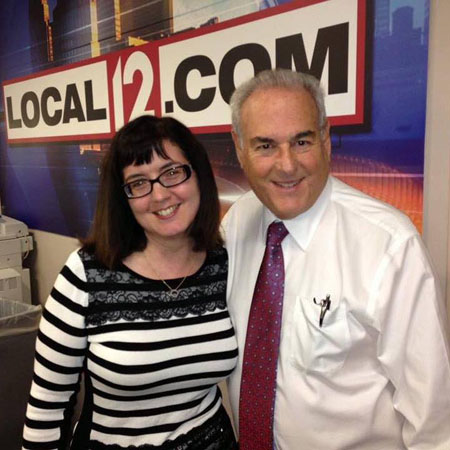 chronic kidney disease, and like millions of others across the United States, he was in need of a kidney transplant. (A close friend of mine is among those millions too, and also received a kidney transnplant.) It was only the end of June when his story became widespread news via his longtime employer and just like that, those people who benefited from his work wanted to help.
chronic kidney disease, and like millions of others across the United States, he was in need of a kidney transplant. (A close friend of mine is among those millions too, and also received a kidney transnplant.) It was only the end of June when his story became widespread news via his longtime employer and just like that, those people who benefited from his work wanted to help.
Many were tested to see if they were a match. Ultimately, his living donor was a producer whose Local 12 newscasts shared his stories for all those years. I’ve known Anita Bray Farrell for a while through social media. I’ve seen her big heart toward animals. Now her generosity has saved a human life, the life of a respected and dear colleague – and friend.
In a news story on Local 12, I saw this conversation:
“Hard to believe that I could get my life back,” said Howard.
“The more I thought about it, he’s helped a lot of people, for decades, literally I think he’s saved some people from financial ruin, and I wanted to pay it back a little bit,” said Anita.
“My biggest fear is that there would be a complication for Howard, not for me,” said Anita.
“I’ve known Anita for years, she is a woman of uncommon grace,” said Howard.
Howard has a little bit of that fear, too, but what do you say to a person that saves your life? (from Liz Bonis)
“You know what she said to me? Because you know, the producers are always saying ‘can I give it a little bit more time, a little more time, my story is going to run a little long’ while she said it’s the first time a producer has ever given a reporter more time, okay I’ll give you more time and it’s not minutes, it’s years,” said Howard.
There is a lesson in here for all of us.
When I spoke with Anita, this is what she told me, “If you are healthy, I would definitely encourage people to do it. It is some time off work, some pain, the testing process is involved but something to consider. Is well worth it to save a life and give something back.”
To learn more about being a kidney donor, please visit this link for the National Kidney Foundation.

